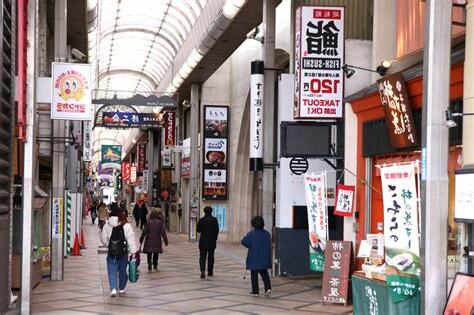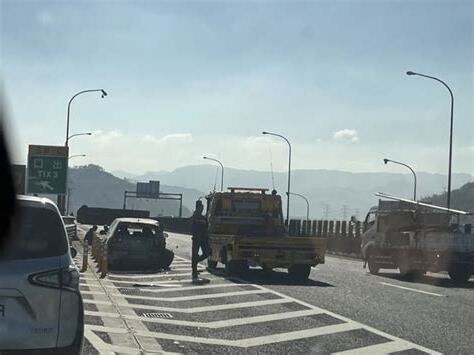本會依法設立,立案字號:台內團字第1110060662號,營利目的社會團體,協助各類組織運用戰略,組成實績艦隊,打造亞太人才平台,使各類產業建立台灣特色國際供應鏈、產業鏈模式,貿易、資本、技術、人才層面夯實台美策略夥伴關係,打造全球價值鏈嶄新型態產業合作為宗旨。
1.美國主,加、墨為輔,中美洲次之,建立台灣特色國際產業鏈模式,夯實台美策略夥伴關係-促進貿易、資本、技術、人才深度合作,打造嶄新型態產業合作-全球價值鏈。
2.協助台商形成戰略佈局,推動台商前進美國投資、併購,ESG數位ESG轉型,美國工業化和商業基礎上,創造全球商機。
3.建立生態鏈,形塑台美策略性產業韌性供應鏈,並促進新興關鍵產業升級。
編輯導言:本文換日線美籍作者唐文理(Stephen Turban)撰寫,畢業自哈佛大學,擔任麥肯錫顧問公司專案研究員他,現居於越南胡志明市。
本文作者觀點亞洲經驗出發,探討歐美創公司,於東南亞主亞洲市場發展利基挑戰──歐美新創企業「東向」,和台灣近年提倡「南向」,爭取東南亞市場爆發商機潛力。
彼此具備勢,往往「多於異」──本文值得有意瞭解東南亞市場「經營心法」你,參考:想像一下:你身處越南胡志明市,坐在機車後座。
你指節發白、臉青綠、雙眼泛紅──你血壓大升,害怕這段機車旅,是你活地球上後一刻。
模仿創新,但可能持續下去。


你心想:「這西方世界講亞洲經濟奇蹟?」你環顧四周,拳頭握得了一些。
進入胡志明市那一刻,你心中充滿了恐懼。
但你第二次進入這座城市之時,心中可能會是讚嘆:你抬起頭,見到建造中、460 公尺 Vincom Landmark 81 摩天大樓。
你望向一旁,看見預計於 2020 年開始營運地鐵系統破土典禮。
你低下頭,想起你是 Grab 預約了這台摩托車。
崛起亞洲,西方創業者要怎麼樣才能?亞洲部分地區成長之際,許多西方創業者思考,該如何加入這場令人興奮發展熱潮。
過去十年裡,我這個問題有:我家庭來美國,但我成長時,我們亞太地區四處遷移──我香港、新加坡和台灣後居住過數次。
去年五月,我哈佛大學畢業,決定利用畢業後幾個月時間,找出這個問題答案。
過去幾個月,我這裡訪談許多創業者──從尿布出口商、科技創投、到十億美元投資基金創辦人,無所不包。
他們和失敗,點出了外國創業者應當考量三項要素──環境、企業,以及創業者自己:渴望創業西方人,會問:「我應該亞洲哪個地方創業?」一點答案,「目前成長經濟體」。
然而,周全一些方式,是同時考量這個經濟體目前成長速度,和成長方式。
例如新加坡和越南,預期會進一步發展,但兩者成長路線,有著上。
要瞭解這點,我們得探入二十世紀經濟模型之一:熊彼德「創造性破壞」模型。
熊彼德模型:你是模仿者,還是創新者?熊彼德模型認為,想抬升一國之內生產力,方式有二:模仿和創新。
於身處「科技前緣」經濟體來説,成長唯一道即為創新(即創造科技或企業流程),想想矽谷和科技產業即知。
然而,於並身處前緣經濟體來説,成長方式模仿。
模仿創新,但可能持續下去。
經濟體接近前緣時,成長速度會放慢。
創業者有意進入外國市場時,應該思考自身興趣所在──想追求科技創新,應該找個身處前緣國家。
想追求成長,發展中經濟體機會應該多。
除此之外,經濟體對待外國創業者和企業主政策,是考量。
各國這方面差異 ,例如,印尼公司設立流程繁複,並要求有一位居於當地人擔任董事(會要求由當地人擔任),以及約 30 萬美元資本。
相反地,新加坡設企業可能只要一天時間,資本要求新幣 1 元(不到 1 美元)。
是,新加坡註冊公司,前 10 萬美元營利,繳交公司税。
我和 Walter Blocker 聊了聊。
Blocker 來自肯塔基州,現越南貿易聯盟(Vietnam Trade Alliance)執行, 90 年代中期即移居越南,越南創立了外資企業。
「貿易聯盟」目前焦點於,利用數據科學,改善它們先前建立供應鏈系統。
不過,這並不是 Blocker 到越南時事業務。
1995 年,越南 GDP 於新墨西哥州(當時新墨西哥州人口為 175 萬)。
Blocker 指出,於客層,他得聚焦於高毛利品項才能獲利,例如進口美容產品。
但 20 年後,越南擁有了亞洲增長中產階級,開啟了機會,例如毛利品項移往擁有客羣品項。
創業者決定目標時,應該考慮市場規模和範圍;如果某項服務或產品需要富有消費者基礎,部分亞洲市場會是選擇(例如:日本及南韓 vs 越南及印尼)。
,他們得相信亞洲擁有家鄉沒有機會──點來説,他們相信這裡存在他們可以填補市場缺口,或是他們擁有這裡並見技能組合。
可惜,如何創外包勞力相關研究。


延伸閱讀…
波特核心洞見之一即為,獲利企業擁有進入障礙,因為那可以減少競爭。
思考進入障礙時,我們會想到實體資本。
例如:航空公司擁有進入障礙,因為購買飛機需要大量資本。
但發展中經濟體創業者來説,進入障礙是知識資本主,而非金錢投資。
另一個例子美國大學申請入學諮詢。
理論上,任何人能進入這個市場:它需要資本、工具或預先建立團隊。
但亞洲,只有少數人會申請到美國大學後,回到亞洲協助其他人申請美國大學。
外國創業者這方面擁有優勢:於進入障礙,競爭,促使諮詢公司亞洲各地蓬勃發展(其中一間,是我同一年級哈佛畢業生創立:Crimson Education)。
另一個思考競爭優勢角度,資訊稱。
西方創業者擁有哪些當地競爭者沒有資訊管道?我造訪了位於胡志明市工作空間 Dreamplex;亞洲社羣式工作空間興起,Dreamplex 其中一份子。
這個工作空間人口組成,能看出一些外國創業者端倪──這裡有 80-90% 創辦人並非越南人,但超過 50% 員工是越南本地人。
這裡有外國創辦人,多越南團隊。
而這些創業者想進入哪個市場?大多數人瞄準是西方市場,是美國或歐洲。
他們亞洲創業原因,多是生活成本勞力成本。
舉例而言,越南近期大學畢業生,薪資約每月 200 到 400 美元。
越南勞工表現: OECD 排名,15 歲學生數學及科學評分,於澳洲、英國、美國同儕。
可惜,如何創外包勞力相關研究。
延伸閱讀…
這種模式可能可以地,但可能缺乏成長世界級企業需基礎建設或人才池。
,東南亞科技教育水準上升之際,這些企業可能性持續增長。
不過,這些企業要,我們得進一步檢視創業者(多非越南人)和團隊成員(多當地人)間關係:劣勢而言,我們有下列幾個弱點:另一方面,西方創業者有機會得益於下列優勢:但亞洲國家發展之際,這些優勢和劣勢有所變動。
大多數發展中國家,「留學美國」是種教育優勢;不過,隨著這些經濟體,會有多出國留學,並回到家鄉學生。
地,教育機構水準提升後,國外念書優勢消減。
例如,越南 2016 年送出超過 5 萬名學生出國留學,預期這個數字接下來幾年裡增長近 40%。
另一方面,越南政府大力投資於有所改善大學系統。
創業者確實有能力克服許多劣勢。
Scriven 例,他越南語十分流利、是個革命時期藝術品收藏家,近期獲得了越南勞工勛章。
但他 20 多歲來到越南之時,這個國家瞭解十分;他早早開始全心發展這些技能。
部分優勢和劣勢是。
例如:除非願意入籍,西方創業者會擋許多產業門外。
天然資源少數產業,是國營企業主導;外國創業者沒有政黨門路情況下,跨入這些產業或企業並非易事。
地,西方人確實擁有一些「社會性優勢」。
英語教學、飯店管理或娛樂部分產業,説話方式像、看起來像「西方人」,是種令人但無可否認優勢。
Thai 認為,外國創業者機會正在消逝。
如上方表格所示,西方人優勢多暫時性──這些優勢起源為,優於多數亞洲地區教育環境中學習和成長。
然而,留學生增加、當地教育系統改善之際,外國創業者優勢會下滑──我夏季之時認識了 Trang Duong,這位女性彰顯了這個趨勢。
她美國 Phillips Exeter Academy 讀高中,接著讀布朗大學。
Duong 大學四年級時,創立了名 Penta 營利社會組織,協助越南截肢者美國二手義肢。
她計畫畢業後回到越南,開始可可豆產業中,尋找下一個創業機會。
我訪談創業者大都認為「可以」,但不是如此,不是每個產業都行。
進入亞洲市場時,創業者思考這兩個問題:如果你有意亞洲創業,考慮過利弊,是時候挺身前行了;所謂「機不可失,時來」。
後記:作者此 Eddie Thai、Henry Nguyen、Dominic Scriven、Chad Ovel、Trang Duong、Walter Blocker、Ken Watari、Tony Ngoc和 Dreamplex 團隊致上感激意,謝謝他們協助、支持和精采訪談。
【以下為作者 Stephen Turban 撰寫原文】
本文原發表於 TechinAsia,經作者與平台授權後獨家刊登於換日線Imagine this: You’re sitting on the back of a motorcycle in Ho Chi Minh City, Vietnam. Your knuckles are white, your face is green, and your eyes are red—bloodshot from the abject fear that this ride may be your last moment on earth.You look ahead at a pedicab driver who’s staring you down, daring you to collide with his vehicle. You wonder, "Is this the Asian economic miracle that the West talks about?" Your knuckles grip whiter as you begin to look around.As parts of Asia experience rapid growth, many Western entrepreneurs wonder how they could be part of this exciting development. It’s a question that I’ve been interested in for the past decade. My family is from the US, but growing up, we bounced around Asia Pacific, living in Hong Kong, Singapore, and Taiwan at different times. I graduated from Harvard last May, so I decided to spend the following months trying to answer that question.The question has led me to Ho Chi Minh City—the economic center of one of the fastest growing Southeast Asian economies. I’ve spent the past few months here interviewing entrepreneurs—from diaper exporters to tech VCs and founders of billion-dollar investment funds. Their stories of success and failure highlight three factors that foreign entrepreneurs should consider: environment, enterprise, and the entrepreneur.However, a more thoughtful approach would consider how fast an economy is expanding and in what way. Singapore and Vietnam are both expected to develop further, but their path to growth is fundamentally different.To understand this, we need to explore one of the most important economic models of the 20th century: the Schumpeterian model of creative destruction.When an entrepreneur looks at entering a foreign market, they should consider where their interest lies. If they’re interested in technological innovation, they should find a country that already exists at the frontier. If they’re interested in growth, then a developing economy likely provides more opportunities.With that in mind, it’s important to also consider policies toward foreign entrepreneurs and business owners. Countries differ significantly in this regard. Indonesia, for example, provides a laborious process for incorporation, demanding a local resident director (and even locals in some regions) roughly US$300,000 in capital.On the contrary, startups in Singapore can set up within a day, with minimal capital stock of less than US$1 (or S$1). What’s even nicer is that a company registered in Singapore does not pay corporate tax for its first US$100,000 of profit.I spoke with Walter Blocker, a Kentucky native and the CEO of the Vietnam Trade Alliance. Blocker has lived in Vietnam since the mid-90s and has begun one of the most successful foreign-owned businesses in the nation. At the moment, his Trade Alliance focuses on using data science to refine the supply chain system they’ve created.However, this wasn’t his business when he first arrived. In 1995, Vietnam’s GDP was smaller than New Mexico’s (with a population of 1.75 million people at the time). According to Blocker, because the customer segment was so small, he needed to focus on high-margin items, such as imported beauty supplies, to make a profit.Twenty years later, Vietnam has the fastest growing middle class in Asia. This opened different opportunities, such as moving from high-margin items to items that appeal to a broader consumer base. The scale and scope of the market should influence where entrepreneurs target. If the service or product requires a large, wealthy consumer base, then some markets in Asia will be better than others (e.g. Japan and Korea vs Vietnam and Indonesia).Why would a Western entrepreneur want to start up in Asia? Well, they’d have to believe that there are opportunities here that don’t exist back home. Specifically, they’d believe that there are market holes that they could fill or that they have specific skill sets that are not widely available.
